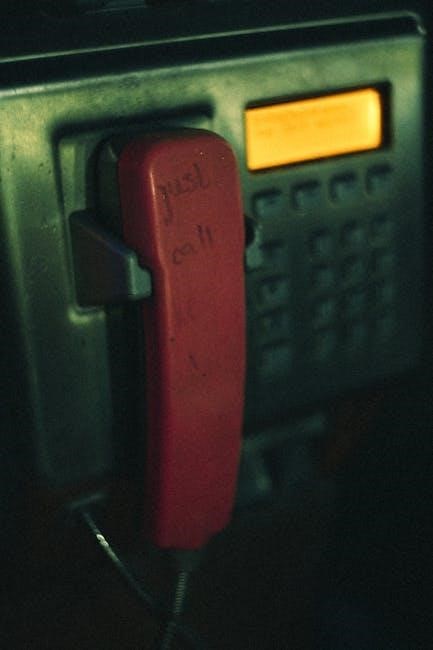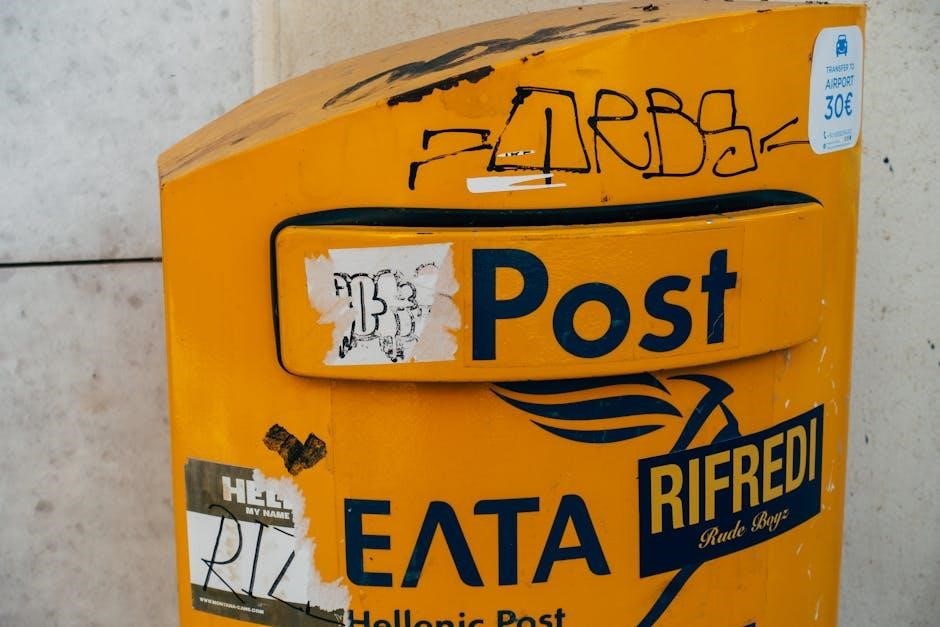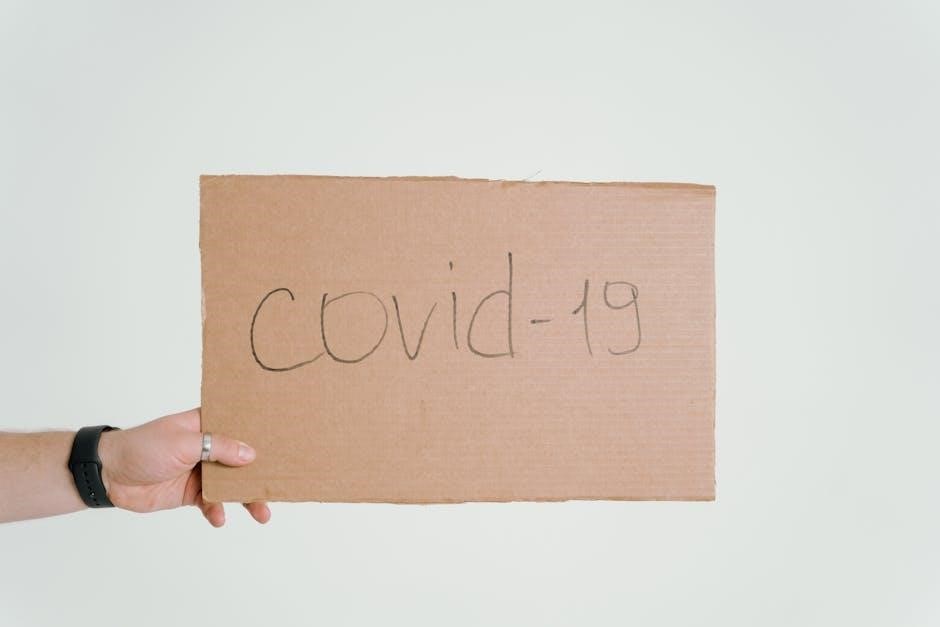Writing winning proposals is crucial in public relations, requiring strategic communication and effective storytelling. A well-crafted proposal can secure clients and build trust, making it essential to master the basics.
1.1 What are Public Relations Proposals?
Public relations (PR) proposals are strategic documents designed to outline communication plans, reputation management strategies, and stakeholder engagement initiatives. They serve as a roadmap for achieving specific organizational goals, such as enhancing brand awareness, addressing crises, or fostering positive relationships with target audiences. A PR proposal typically includes situation analysis, objectives, strategies, tactics, budget, and timelines, ensuring clarity and alignment with client or organizational needs. It is a persuasive tool that demonstrates how PR efforts can deliver measurable results, making it essential for securing approval or winning new business. By presenting tailored solutions, PR proposals aim to establish a mutually beneficial relationship between the organization and its stakeholders.
1.2 Importance of Proposals in PR
Proposals are the cornerstone of public relations, serving as a critical tool for securing business, building relationships, and demonstrating value. They provide a clear roadmap for achieving organizational objectives, whether it’s enhancing brand reputation, managing crises, or engaging stakeholders. A well-crafted proposal showcases creativity, strategic thinking, and a deep understanding of client needs. It also highlights measurable outcomes, which are essential for justifying investments in PR initiatives. By presenting tailored solutions, proposals help PR professionals stand out in a competitive landscape. Moreover, they foster collaboration by aligning expectations between clients and practitioners, ensuring shared goals and mutual success. In essence, proposals are not just documents—they are strategic instruments that drive results and reinforce the importance of public relations in achieving organizational success.

Understanding the Basics
Mastering the fundamentals of proposal writing is essential for crafting compelling PR proposals. It involves understanding key elements, such as objectives, strategies, and budgets, to create a clear, structured plan.
2.1 Key Elements of a PR Proposal

A successful PR proposal typically includes several key elements that ensure clarity and effectiveness. These elements often start with an executive summary, providing a concise overview of the proposal. Next, a situation analysis is conducted to understand the client’s challenges and opportunities. Objectives are then defined to guide the PR strategy, followed by a detailed outline of strategies and tactics to achieve those goals. A realistic budget and timeline are also essential to demonstrate feasibility. Finally, a strong call to action is included to encourage the client to move forward. These components work together to create a compelling and professional proposal.
2.2 The Proposal Planning Process
The proposal planning process involves a series of structured steps to ensure a well-organized and effective PR proposal. It begins with understanding the client’s needs and objectives, followed by conducting a situation analysis to identify opportunities and challenges. Next, the audience is analyzed to tailor the message and strategy appropriately. A clear outline of goals and key performance indicators (KPIs) is then established to guide the proposal. The process also includes brainstorming creative strategies and tactics, ensuring they align with the client’s vision. Finally, a detailed timeline and budget are developed to demonstrate feasibility. Each step builds on the previous one, ensuring the proposal is cohesive, persuasive, and tailored to the client’s requirements.

Research and Analysis
Research and analysis are foundational steps in crafting effective PR proposals, involving situation, audience, and SWOT analyses to inform strategic decisions and align objectives with client needs.
3.1 Situation Analysis
A situation analysis is a critical step in public relations proposal writing, helping to understand the client’s environment, challenges, and opportunities. It involves examining internal and external factors, such as market trends, stakeholder perceptions, and competitive landscapes, to tailor strategies effectively. By identifying key issues, PR professionals can align their proposals with the client’s objectives and deliver actionable solutions. This analysis also ensures that the proposed campaign resonates with the target audience and addresses their specific needs. Conducting a thorough situation analysis lays the groundwork for a compelling and relevant proposal, demonstrating a deep understanding of the client’s context. Real-world examples and case studies often illustrate how this step leads to successful outcomes, making it a cornerstone of the proposal development process.
3.2 Audience Analysis
Audience analysis is a vital component of crafting effective public relations proposals. It involves identifying and understanding the target audience’s demographics, interests, preferences, and communication channels. By analyzing the audience, PR professionals can tailor their messages to resonate effectively, ensuring alignment with the client’s goals. This step helps in creating strategies that address the audience’s specific needs and preferences. For instance, understanding whether the audience prefers digital or traditional media can shape the proposal’s approach. Audience analysis also enables the identification of key stakeholders and influencers, ensuring their concerns are addressed. Real-world case studies often highlight how audience insights drive successful campaigns. Conducting thorough audience analysis ensures that the proposal is relevant, engaging, and impactful, ultimately enhancing its chances of approval and success.
3.3 SWOT Analysis
A SWOT analysis is a strategic tool used in public relations proposals to evaluate strengths, weaknesses, opportunities, and threats. This framework helps identify internal strengths and weaknesses, such as team expertise or resource limitations, and external opportunities and threats, like market trends or competitor actions; By conducting a SWOT analysis, PR professionals can align their strategies with the client’s objectives, leveraging strengths and opportunities while mitigating weaknesses and threats. Case studies often demonstrate how SWOT analyses inform successful campaigns, ensuring proposals are realistic and actionable. This step ensures that the proposed strategies are well-rounded and tailored to the client’s specific situation, enhancing the proposal’s credibility and likelihood of approval. Incorporating SWOT analysis into the proposal development process is essential for creating a comprehensive and effective public relations plan.

Crafting the Proposal
Crafting a proposal involves creating a clear, structured document with key elements like executive summary, objectives, strategy, and budget. It requires precision and alignment with client goals.
4.1 Executive Summary

The executive summary is a concise overview of the proposal, highlighting its purpose, scope, and key recommendations. It serves as the first impression, summarizing the entire document in a clear and engaging manner. A strong executive summary should capture the reader’s attention, providing a snapshot of the proposed strategy, objectives, and expected outcomes. It should be written in a persuasive tone, emphasizing the value proposition and alignment with the client’s goals. Clarity and conciseness are critical, as this section often determines whether the proposal will be read further. By distilling complex ideas into a compelling narrative, the executive summary sets the tone for the entire proposal and underscores its relevance and impact.
4.2 Developing Objectives
Developing clear and measurable objectives is essential for a successful public relations proposal. Objectives should align with the client’s goals and be specific, achievable, relevant, and time-bound (SMART criteria). They guide the strategy and tactics, ensuring all efforts are focused and purposeful. Well-defined objectives help measure the campaign’s success and demonstrate value to the client. They should address key issues, target audiences, and desired outcomes, providing a roadmap for achieving results. By establishing realistic yet ambitious goals, the proposal showcases professionalism and understanding of the client’s needs. Effective objectives also facilitate evaluation, allowing for adjustments and improvements throughout the campaign. Clear objectives are the foundation of a winning proposal, ensuring everyone involved is on the same page and working toward shared successes.
4.3 Strategy and Tactics
Developing a robust strategy and selecting effective tactics are critical components of a winning public relations proposal. The strategy outlines the overall approach to achieving the client’s objectives, while tactics are the specific actions taken to execute the plan. A well-defined strategy ensures alignment with the client’s goals and target audience needs. Tactics should be innovative, actionable, and measurable, such as media releases, social media campaigns, or community events. They must complement the strategy and deliver tangible results. The strategy should also address potential challenges and opportunities, ensuring adaptability. By combining a clear strategy with targeted tactics, the proposal demonstrates a comprehensive understanding of the client’s needs and a practical path to success. This section showcases the proposer’s expertise and creativity in driving meaningful outcomes.
4.4 Budget and Timeline
A well-structured budget and timeline are essential components of a winning public relations proposal. The budget outlines the estimated costs for each component of the campaign, ensuring transparency and credibility. It should include detailed breakdowns of expenses such as personnel, materials, and media placements. The timeline provides a clear roadmap for the project, highlighting key milestones and deadlines. This section demonstrates the proposer’s ability to manage resources effectively and deliver results within the agreed timeframe. A realistic and comprehensive budget and timeline not only build trust but also show a deep understanding of the client’s needs and expectations. They are critical for ensuring the proposal is both achievable and aligned with the client’s objectives.
Best Practices
Clarity and conciseness are key to successful proposals. Use visual aids to enhance understanding and ensure error-free writing through rigorous proofreading. These practices build credibility and professionalism.

5.1 Clarity and Conciseness
Clarity and conciseness are essential for crafting compelling public relations proposals. Avoid using overly complex language or jargon, as this can confuse your audience. Instead, use straightforward, professional language to convey your message effectively. Ensure that every section of your proposal, from the executive summary to the budget, is concise and free of unnecessary details. This approach not only enhances readability but also demonstrates your ability to communicate clearly and efficiently. Additionally, organize your proposal logically, with each section building upon the previous one. By maintaining clarity and brevity, you can make your proposal more engaging and persuasive, increasing the likelihood of winning over your target audience.
5.2 Visual Aids
Visual aids are powerful tools that can enhance the effectiveness of your public relations proposal. Incorporating elements like charts, graphs, and infographics helps to present complex data in a digestible format. Use high-quality images and diagrams to illustrate key points, such as campaign strategies or timeline breakdowns. Videos or testimonials can also add credibility and emotional appeal to your proposal. Ensure that all visuals are relevant and align with your narrative to avoid distractions. Properly labeling and referencing these elements is crucial for clarity. By integrating visual aids strategically, you can make your proposal more engaging, professional, and persuasive, ultimately increasing the chances of winning over your audience. This approach also demonstrates your attention to detail and creativity in communication.
5.3 Proofreading
Proofreading is a critical step in ensuring the professionalism and effectiveness of a public relations proposal. Even minor errors can undermine credibility and jeopardize the success of your pitch. Carefully review your document for grammatical mistakes, typos, and formatting inconsistencies. Pay attention to details such as consistent use of terminology and proper punctuation. It is also essential to check that all facts, figures, and references are accurate. Consider having a colleague or professional editor review your proposal to catch overlooked errors. A polished, error-free proposal conveys competence and attention to detail, which are vital for winning trust and securing opportunities. This step ensures your message is clear, persuasive, and aligned with your client’s expectations, maximizing the impact of your proposal.

Case Studies
Case studies provide real-life examples of successful public relations proposals, offering insights into effective strategies, common challenges, and lessons learned from diverse PR campaigns and client engagements.
6.1 Successful Proposals in PR
Successful public relations proposals often share common traits, such as clear objectives, tailored strategies, and a deep understanding of the client’s needs. They demonstrate a strong alignment between the proposed actions and the desired outcomes. For instance, award-winning campaigns frequently highlight innovative tactics, such as leveraging social media or community engagement, to build trust and credibility. These proposals also emphasize measurable results, ensuring that clients can track the impact of the PR efforts. Real-world case studies reveal that proposals that combine creativity with data-driven approaches are more likely to win approval. Additionally, successful proposals often include a detailed situation analysis, showcasing the PR team’s ability to address challenges effectively. By focusing on these elements, practitioners can create compelling proposals that stand out and deliver value.
6.2 Lessons Learned
Analyzing successful and unsuccessful proposals reveals valuable insights. A key lesson is the importance of clarity and conciseness, as overly complex proposals often fail to resonate. Another critical aspect is understanding the client’s needs deeply, ensuring alignment between objectives and strategies. Proposals that lack a clear situation analysis or fail to address potential challenges are more likely to be rejected. Additionally, the use of data and measurable outcomes strengthens credibility. Many successful proposals emphasize creativity and innovation, showcasing unique approaches to public relations challenges. Proofreading and attention to detail are also essential, as errors can undermine professionalism. By learning from these experiences, practitioners can refine their approach, leading to more effective and persuasive proposals in the future.

Tools and Resources
Utilize software like Proposal Writing Software by Tom Sant for structured drafting. Leverage templates, such as the public relations proposal template, to streamline your process. Books like Writing Winning Proposals: Public Relations Cases offer expert guidance, while online platforms provide interactive examples and analytics tools to refine your approach.
7.1 Software for Proposal Writing
Effective proposal writing requires the right tools to streamline the process. Software solutions like Proposify, PandaDoc, and Bidsketch are popular for creating professional proposals. These platforms offer templates, collaboration features, and analytics to track client engagement. Proposify, for instance, provides PR-specific templates and content libraries to help craft compelling narratives. PandaDoc excels in customization and e-signature functionality, ensuring seamless client approvals. Bidsketch simplifies pricing and timeline presentations, making it easier to outline strategies. Additionally, tools like Tom Sant’s Proposal Writing Software emphasize structured drafting, aligning with the principles outlined in Writing Winning Proposals: Public Relations Cases. These resources empower professionals to deliver polished, strategic proposals that resonate with clients and stakeholders.
7.2 Templates
Templates are invaluable for streamlining the proposal-writing process in public relations. They provide a structured framework, ensuring consistency and professionalism. Many resources, such as Writing Winning Proposals: Public Relations Cases, offer customizable templates tailored to PR campaigns. These templates often include sections for executive summaries, situation analyses, and strategy outlines. They save time by eliminating the need to start from scratch, allowing practitioners to focus on creativity and strategy. Additionally, templates ensure that key elements like objectives, timelines, and budgets are clearly presented. Visual aids, such as charts and infographics, can also be integrated into templates to enhance readability. By leveraging these tools, professionals can craft compelling proposals that align with client needs and industry standards, ultimately increasing their chances of success.
A well-crafted proposal is essential for success in public relations, requiring strategic thinking and clear communication to build trust and achieve desired outcomes.

8.1 Final Tips
When crafting a winning public relations proposal, always prioritize clarity and conciseness. Ensure your proposal aligns with the client’s objectives and demonstrates a deep understanding of their audience. Use compelling storytelling and visual aids to enhance your message. Conduct thorough research to identify opportunities and challenges, and present innovative strategies that address them effectively. Proofread your work meticulously to avoid errors, as professionalism is key. Tailor your approach to stand out from competitors and emphasize the value you bring. Finally, include a clear call to action and follow up promptly to show your commitment. By combining these strategies, you’ll increase your chances of securing approval and building long-term client relationships.
8.2 Future of PR Proposals
The future of PR proposals lies in leveraging digital tools and data-driven insights to create more personalized and interactive pitches. As technology advances, proposals will incorporate multimedia elements like videos and infographics to captivate audiences. AI will play a role in streamlining research and tailoring content to specific client needs. Additionally, there will be a greater emphasis on measuring the ROI of PR campaigns through advanced analytics. Professionals must adapt to these changes by staying updated on industry trends and continuously refining their skills. By embracing innovation and maintaining a client-centric approach, PR proposals will evolve into powerful tools for building lasting relationships and achieving strategic goals.







